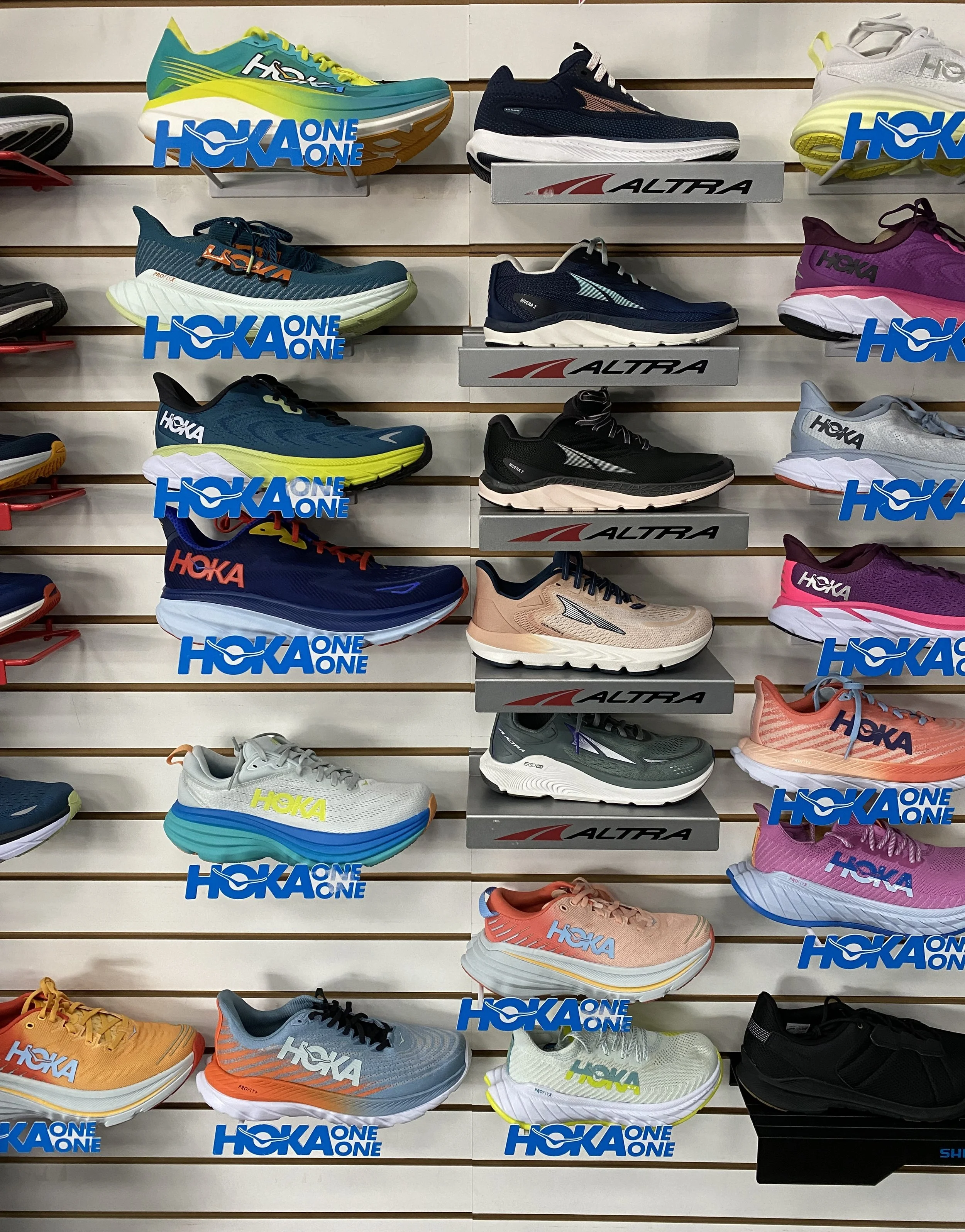How to Pick Running Shoes
There are so many different shoe brands, each making a huge variety of shoes, which can be a bit daunting. In addition, there is no greatest shoe out there that will work for every single runner. However, here are a few recommendations from the perspective of a coach who works with triathletes, runners, ultra-marathoners, and lifelong runner myself.
Run Form Informs The Shoe You Buy. When you go to buy a new pair of running shoes, bring your most recent running shoes with you. Ideally, you would work with a shoe "consultant" or "fitter" who has looked at the wear pattern on the bottom of your running shoes and has had a chance to look at your running form. After looking at your shoe wear pattern, run form and learning about injury history or lower leg and foot differences (bunions, hammer toes, etc.), the shoe consultant/fitter should be able to help you pick the correct shoe based on this information.
Buy Multiple Pairs. Once you find a pair of shoes that works well for you, buy multiple pairs. Shoe companies tend to change shoe shape and sizing every year or so, so if there is a pair that works well for you, buy 2-3 pairs that you can rotate each run. Most runners should replace their shoes every 300-500 miles, depending on the weight of the runner and their mechanical efficiency. This means every 5-6 months for the recreational or lightweight runner and every 2-3 months for the high mileage or heavier runner.
Buy Different Types of Shoes. Having a variety of shoe types (cushioned, minimalist, race flats, trail, "super" shoes) in your rotation can positively impact your running. Each shoe type and each surface (concrete, trail, grass, asphalt, track) gives you different feedback and helps your body to adapt and learn from the different stimuli. I personally rotate through a variety of shoes depending on the goals for a workout; minimally cushioned shoes for speed work days, trail shoes for trail runs or gravel track workouts, carbon-plated shoes for race day and key workouts, and moderate to high cushioned for easy runs and long runs.
Things to Avoid. If a shoe doesn't feel good in the store, it likely won't feel good when you run. Secondly, don't pick your running shoes based on color or because it matches your running kit. Personally, I love how Hoka shoes look, but based on my foot shape and run form, Altra shoes work best for me. Thirdly, wear your favorite running socks when you buy your new shoes. (For race day shoes, try them on sock-less if you race without socks.) Finally, if your heel slides around, the shoe doesn't fit. If your toes are pinched, the shoe doesn't fit. And if part of your foot is hanging over the shoe's sole, but you really like the color, the shoe doesn't fit.
A Word About Super Shoes. The introduction of carbon-plated run shoes has led to performance benefits for runners across the running pace spectrum. These performance benefits come from the shoe altering your running economy, including altering your run mechanics in the foot and ankle. Although there is not enough clinical peer-reviewed proof that these shoes directly cause foot injuries, there is debate and anecdotal correlation that super shoes can cause injuries in your feet, such as bone stress injuries. If you do run in super shoes, don't use them exclusively. Have them as part of your shoe rotation.
To see what shoes we currently carry at Playtri, follow this link: https://playtristore.com/collections/running-shoes. And if you have any questions about anything in this article or are interested in learning about different coaching options, please reach out to me at jim.rowe@playtri.com. Happy training and racing this year!
Jim Rowe is a Playtri Level 4 Coach and Coach Education Lead, a USAT LI Certified Coach, an NASM Certified Personal Trainer, and an Ironman and 70.3 World Championship Qualifier who works with adult athletes of all abilities from beginners to IRONMAN World Championship qualifiers. Learn more about Jim at www.playtri.com/jim-rowe.

